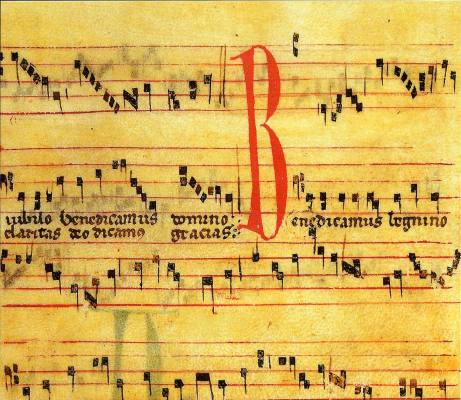 |
| From a facsimile edition of the Codex |
The Abbey of Santa Maria la Real de Las Huelgas was founded in 1187 by Alfonso VIII of Castile, at the request of his wife, Eleanor of England, the daughter if Henry II an Eleanor of Aquitaine. It was founded on land that was going unused at the time; huelgas meant land that is fallow, although nowadays it is used to refer to "labor strikes."
Its origin granted it many royal privileges: it was exempt from taxes, held many valuable items that belonged to royal families, and became a traditional site for many royal weddings, such as that between Edward I of England and Eleanor of Castile. The monastery became Cistercian in 1199 and the burial sit for the royal family. Two of the first royal burials were the founders, Alfonso VIII and Eleanor of England.
Known for the privileges of its abbess, and for the hospital founded by Alfonso VIII, Las Huelgas gave to the modern world one more fascinating item left over from the Middle Ages: music.
In 1904, while doing research on the origins and development of Gregorian chant, two Benedictine monks found a manuscript in Las Huelgas containing 45 monophonic pieces and 141 polyphonic pieces. They are written on fairly durable parchment in red and black ink with Franconian notation (briefly discussed here and here). The Las Huelgas Codex includes many pieces familiar to scholars, but also pieces that are not recorded elsewhere.
Most of the pieces are from the late 13th century, when it is known that Las Huelgas had a 100-woman choir. We have to assume that, despite the Cistercian rules against the performance of polyphonic music, the choir of Las Huelgas performed these pieces at will, thanks to their royal patronage and privileges (the abbess was allowed for a long time to call synods, confirm abbesses of other monasteries, and even hear confession and grant absolution!).
Here is a recording of the Benedicta et venerabilis II and the Benedicamus dominu, with pictures from the Abbey's architecture and art. Enjoy!


